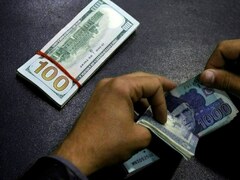HOUSTON: Shell Plc is aiming to begin producing natural gas at Venezuela’s Dragon gas field and exporting it to neighboring Trinidad and Tobago in 2026, a year ahead of the original 2027 start date, according to two people familiar with the project.
The project illustrates industry hopes that there will continue to be exceptions on US sanctions on Venezuela, despite recent stricter enforcement. The partners plan to start survey work next month and have decided to drill three wells, the people said, adding that it will need a renewed US license later this year.
US sanctions target virtually the entire Venezuelan oil and gas industry, which is controlled by state company PDVSA , meaning countries like Trinidad and private operators that abide by the measures require US authorizations to export or pay revenue to sanctioned entities including the government, the central bank and PDVSA.
Such a US authorizing license for Dragon was first granted in early 2023 and extended later through October 2025. Trinidad’s National Gas Company said the license remains in effect. “NGC and Shell continue to work assiduously on the Dragon Project and remain committed to achieving first gas as soon as is reasonably possible,” it said in a statement.
Shell did not respond to a request for comment.
Trinidad’s government last month said it would brief Washington on the importance of keeping US licenses to develop gas projects with Venezuela for reasons of regional energy security. The timeline for first production is being moved up as Shell tries to secure gas supplies to ramp up production of liquefied natural gas at Trinidad’s Atlantic LNG project.
Last year, the flagship Atlantic LNG project produced 8.5 million metric tons, 4 million tons short of its installed capacity, because of insufficient gas, according to preliminary data from LSEG.
Earlier this month, BP, the other major shareholder in Atlantic LNG, announced that it would decommission the project’s first liquefaction train, which was idled in 2020 due to lack of gas.
Dragon has an estimated 4 trillion cubic feet of gas reserves and is just across the maritime border from a Trinidad field that has a pipeline to the Atlantic LNG facility.
Shell is expected to begin an environmental baseline survey in April to look at the waves, sea currents, earth movement and marine life, as part of the engineering work to construct a roughly 10 miles (16 km) pipeline from Dragon to its facilities in Trinidad, the sources added.
Venezuela in 2023 granted a 30-year license to Shell and NGC to explore and produce the gas field. A final investment decision by Shell is expected this year, after a decision from Washington on the extension of the US license.
Washington earlier this month terminated a key license for US major Chevron to operate in Venezuela. Since then, there have been signals by the Trump administration that it is going to take a harder line on Venezuela. However, the US has so far not announced any cancellation of licenses related to energy projects between Venezuela and Trinidad.




















Comments